In this fourth ‘So You Wanna Be’ career series for kids, we’re very excited to have Joanne Soo. She is a member of Singapore’s first all-women’s team to scale Mount Everest in 2009.
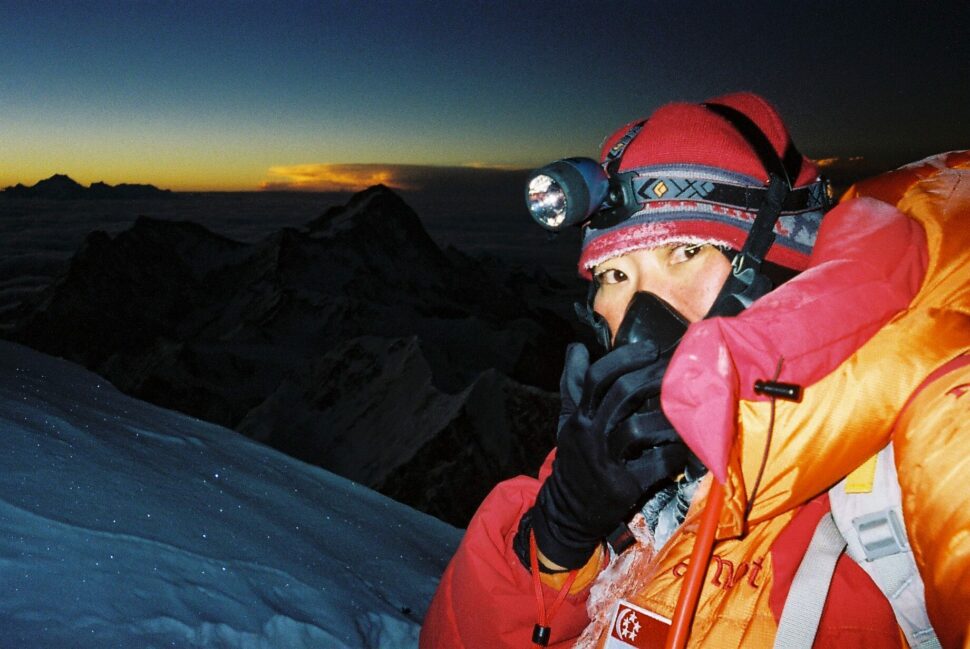
Joanne takes a selfie near the summit of Mt. Everest
Q: Hi Joanne, What do you do?
A: Currently, I’m in the travel business. I bring people on adventures to scale mountains around Asia, and in Europe as well. One of the furthest places we go to is South America. In general, my business involves bringing people to scale heights as well as having an experience of a lifetime.
Life In The Mountains
Q: How many days does it take to climb the mountain?
A: Most of the time, we spend about 15 days to one month.
For example, in Argentina, Aconcagua, we spend about 9-12 days just to attempt the peak. In addition, the journey from Singapore to Argentina takes about 36 hours as we have to move from the city to the remote region, which takes 2-3 days, the approach walks, including the summit will take 10-15 days.
An expedition like that easily takes us 30 days. For places like Nepal, climbing Everest takes about 2.5 months.
Q: What do you eat/Where do you sleep in the mountains?
A: The food that we have is typically what is available in the country. One of the biggest challenges is that we usually miss the food back home.
But for a mountaineer, we have to be able to adapt. If you love local food, for example, chicken rice or fishball noodles, we don’t get that overseas.
In Argentina, we usually eat western food – a lot of bread, a lot of pasta. In Argentina, they eat a lot of meat – ham, bacon, and beef. Meat eaters would love this place!
But on the trek, because we are in a remote region, luxurious food is limited so usually bring a lot of comfort food – for example, bak gua! Because it can be sealed, we can hold onto it for weeks.
By the time we go up the mountain, we can heat it up and it would be a precious snack.
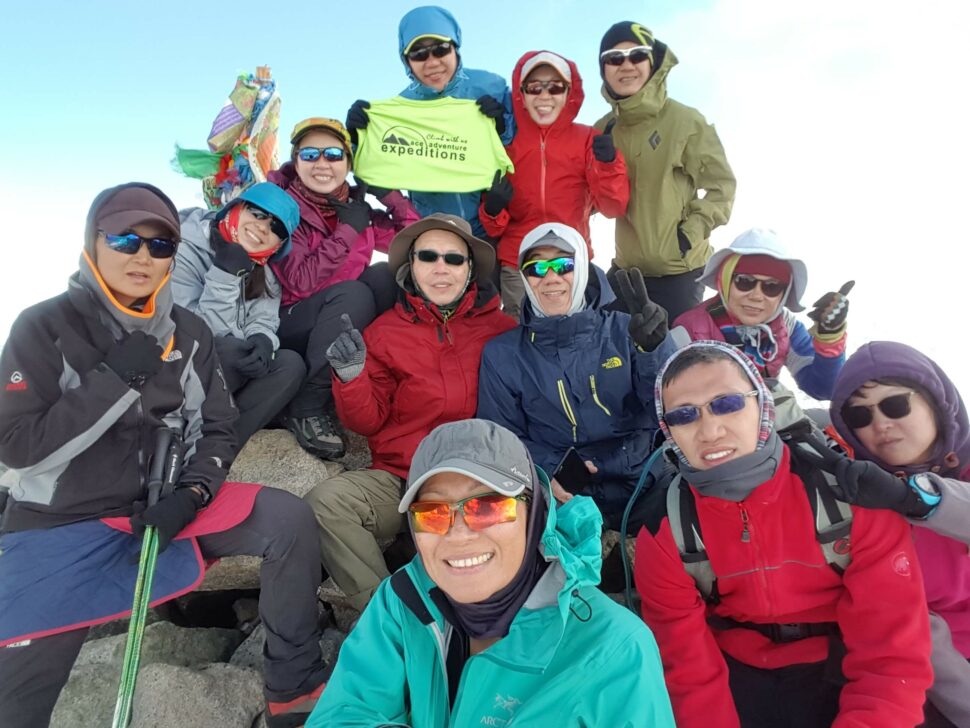
Joanne and her team at Malchin Peak in Mongolia
Q: Does this mean you cook your own food in the mountains?
A: For most of our trek, we have to do our own cooking or at some places, they do offer kitchen service, a team of cooks to prepare food for us.
However, once we move beyond a certain altitude, where we can’t have too many people or don’t have enough space, climbers will have to cook our own food.
Ideally, we would choose food with good nutrition value. But unfortunately, we always pick the easiest thing to cook – instant noodles!
As mountaineers, we often eat instant noodles as meals. But since we know the energy level won’t be enough, we will supplement our diet with power gels and chocolate bars.
Mountaineering for Everyone
Q: What were you working as before you started your business?
A: I was working with a club and used to organize activities for club members. That’s actually where I got the inspiration to start my own business.
Because it was in a club setting, I had to organize activities only for club members but I had a bigger vision. I wanted to organize experiences for Singaporeans at large. That was how I started organizing adventure activities.
I told myself, “Hey! The participation here is only for members. What if people are not members? Maybe it’s time for me to move out and try out on my own, maybe organize activities for non-members too? So that they too, can experience adventure sports.”
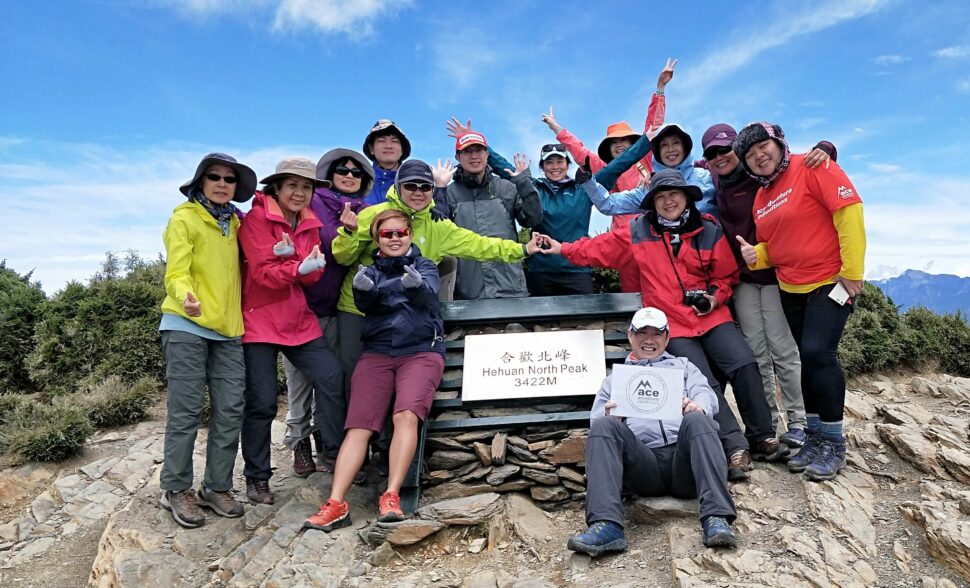
Joanne leads a group of trekkers at Mt. Hehuan in Taiwan
Q: What are the challenges when bringing people overseas for mountaineering?
A: One of the common things I realized is that people don’t have enough mental preparation.
People might think they enjoy camping but they don’t realize when they go camping in Singapore, they’re still in their safe space.
When we move into another country and they sleep in another tent, they start fearing things like avalanches, and rocks falling onto them. People usually overlook these fears until they get there.
It would affect their sleep and when you don’t have enough sleep, it affects your mental and physical health. It affects whether you can climb well or not. If you don’t get a good night’s rest the night before, you’ll feel very tired.
Women Empowerment
Q: Can you tell us more about being on Everest in an All-Women’s team?
A: I scaled Mount Everest in 2009 – that’s about 11 years ago. The idea was mooted even earlier.
We took about 5 years to prepare to climb Mount Everest, which is the tallest in Southeast Asia, and also the tallest in the world.
Mountaineering back then was a male-dominated sport. Now, more women are involved but you still see more men. Back then, we already had a team but it only consisted of men. It was a team of women who were part of the National University of Singapore’s sports group who decided to create an all women’s team to climb Everest.
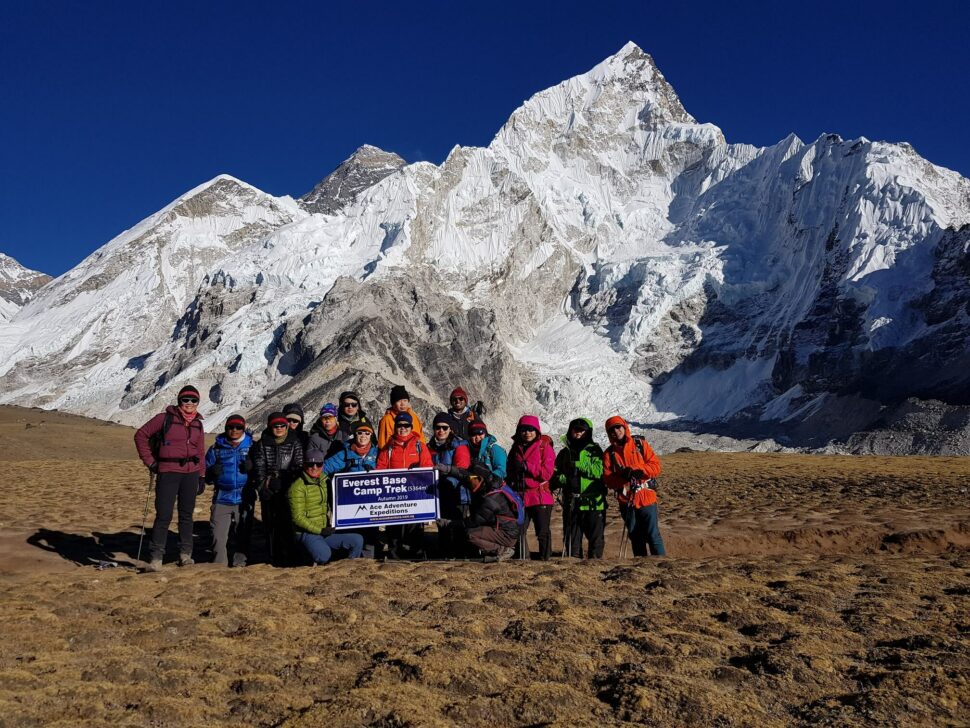
Joanne Soo led a team to Everest Base Camp
They advertised in Straits Times to ask women to sign up and express interest. I went in with the intention to try. From a team of 80 ladies who responded to the ad, we scaled down to 30 and eventually the final 20.
Soon after, we started meeting up to train. Out of these 20 women, some of them eventually changed their minds. Every year from then, we would climb a mountain together. It was a way to train and evaluate our minds and capabilities, as well as for us to see if mountaineering was our sport.
From 20, we finally scaled down to 6. That 4 to 5 years of training was very intensive. Our only goal was to climb Mount Everest. We were very focused.
I went in with the intention of just trying. Each time I summit a peak, I thought to myself, “ Oh! I have successfully climbed this mountain, so what’s next? I’ll just keep on going”
Even though my mindset was just to try, after each mountain I climbed, I felt more confident and became aware that I enjoyed mountaineering a lot. My mindset changed – from “trying to wanting to achieve it”.
I realized that because I tried it, I started to know what I want. From a personal goal, it then transcended into a team goal and from a team goal, we realized so many Singaporeans were supporting us that it became a national goal as well.
Bringing the national flag up there became such an important mission not just for ourselves but for the nation.
We spent 5 years working together in preparation for the mountain. Climbing Everest is a huge project. It’s not just the physical challenge but the financial one.
We had to look for sponsors. Over the 5 years, we had to share our vision with strangers who eventually supported and sponsored us, making our dream possible.
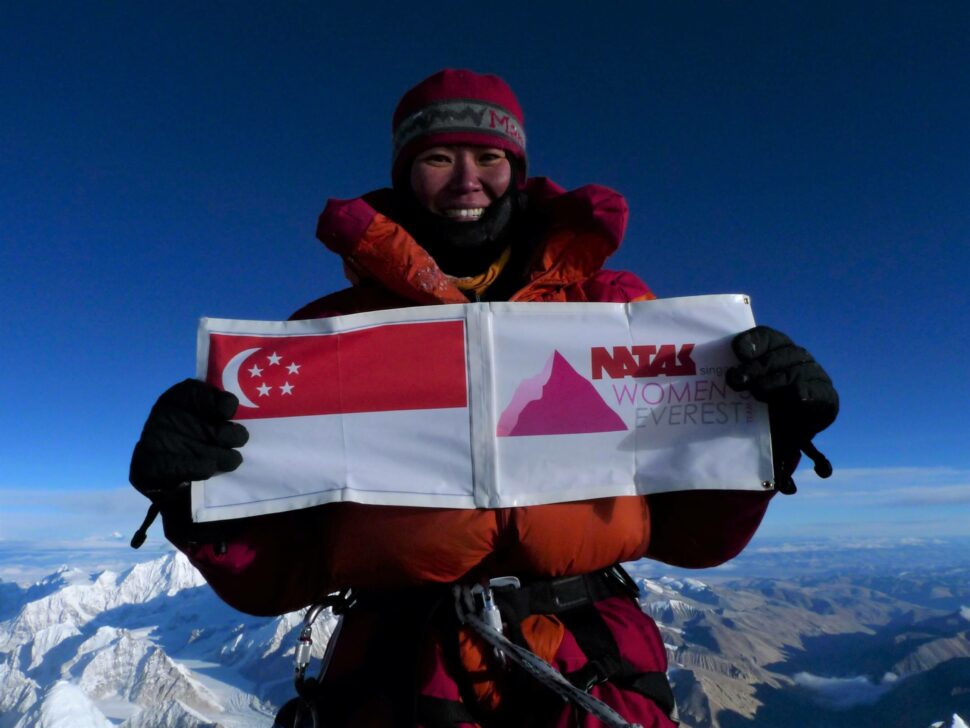
Joanne upon reaching the summit
Challenges After Reaching The Top
Q: What are some challenges you have faced in your business since Everest?
A: After Everest, when I had to return to our business, I felt lost.
For five years, I had one sole focus which was to scale Everest and come back home safe. It was a dream come true. We planted the Singapore flag on top of the world!
So after that was achieved, I felt very lost when I came back home. The difficult question was – what’s next? I thought it would be so easy. While training, we were meeting 8 times a week and then suddenly, we weren’t meeting anymore.
That was the time when I felt lost, and I realized it was similar to anyone who thought they had achieved something. It took me one year to get back to life. It made me realize that we always have bigger “Everests” to scale.
I took a step back and looked at what else I could do. I restarted my journey, I used my Everest training and challenges we faced and looked at my business in a different light.
So I reinvented my business and that was when we managed to venture beyond Asia.
Business and Passion Combined
Q: What’s one thing people don’t know about your travel business – what’s one pro and one con?
A: Many people don’t know that in our field, bringing someone out for an adventure is exciting but more importantly for us, we have to bring them home safely.
People might think that safety is their own responsibility and sometimes not realize they are not competent enough. Some might even argue with us. They forget that while they’re responsible for their own lives we are, as their guides, also responsible to bring them home safely.
Some people might think “if I’ve paid for this adventure, I want to achieve what I want” and become very wilful.
There’s a mountaineer named Ed Viesturs who once said “Going up is optional, coming down is mandatory.”
What I do enjoy about my work is that I’m able to bring people out to climb mountains.
Most people who want to climb mountains have a reason. Sometimes it’s a simple one – to get away from work. Some people climb to find themselves. My work allows people to do all of this in a safe space.
I provide a passageway for you to do what you hope to achieve and come back with a happy heart. It’s my greatest reward for this job.
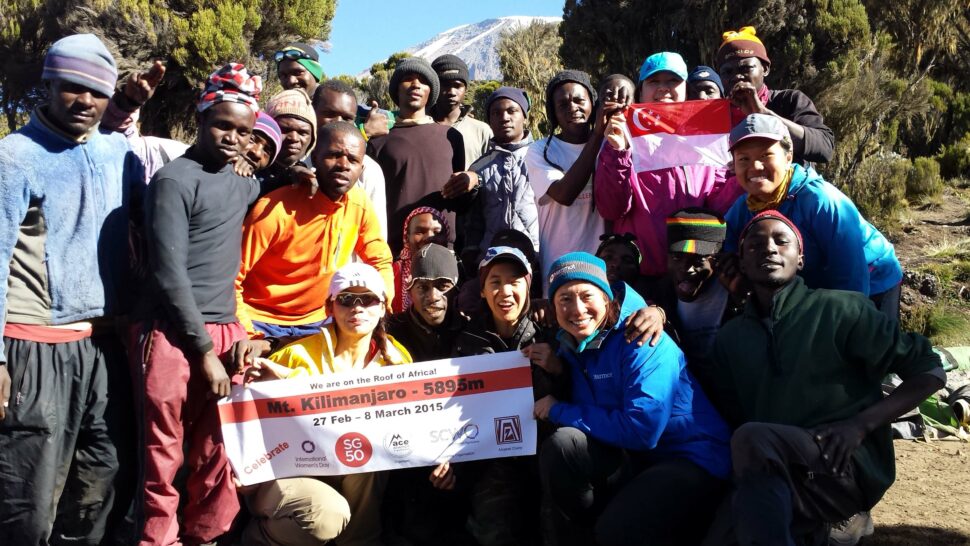
At Mt. Kilimanjaro in Tanzania
Advice For Future Mountaineers
Q: Any advice for future mountaineering guides?
A: This career is a niche one. I’m into adventure sports and more specifically mountaineering.
When you realize you want to do something out of the ordinary, ask yourself what you want from this non-mainstream life. It may not be a bad thing because it means there aren’t as many people doing the same thing.
When I first started the business, a lot of my peers didn’t think a woman could do this. They told me that this is a man’s sport. But I told them that it’s precisely because there are no women out there doing this, that I can decide how a woman would do this.
At the end of the day, are we happy with what we’re doing? That’s very important. Who are we doing this for?
I felt very happy for the last 30 years doing this business. And so that’s probably the important thing. If you’re happy with what you’re doing, you will do well.
When you’re happy you can face challenges better – so being happy is very important.
WERE YOU INSPIRED BY HER STORY?
If you were, then like and share this article.
We’ve got many other inspiring stories. Check them out below.
Career Series for Kids: So You Wanna Be An Animation Designer
Career Series for Kids: So You Wanna Be A Cabin Crew
Career Series for Kids: So You Wanna Be An Automotive Engineer
Don’t forget to like and follow us on your favourite social: Facebook, Instagram, and Tiktok.

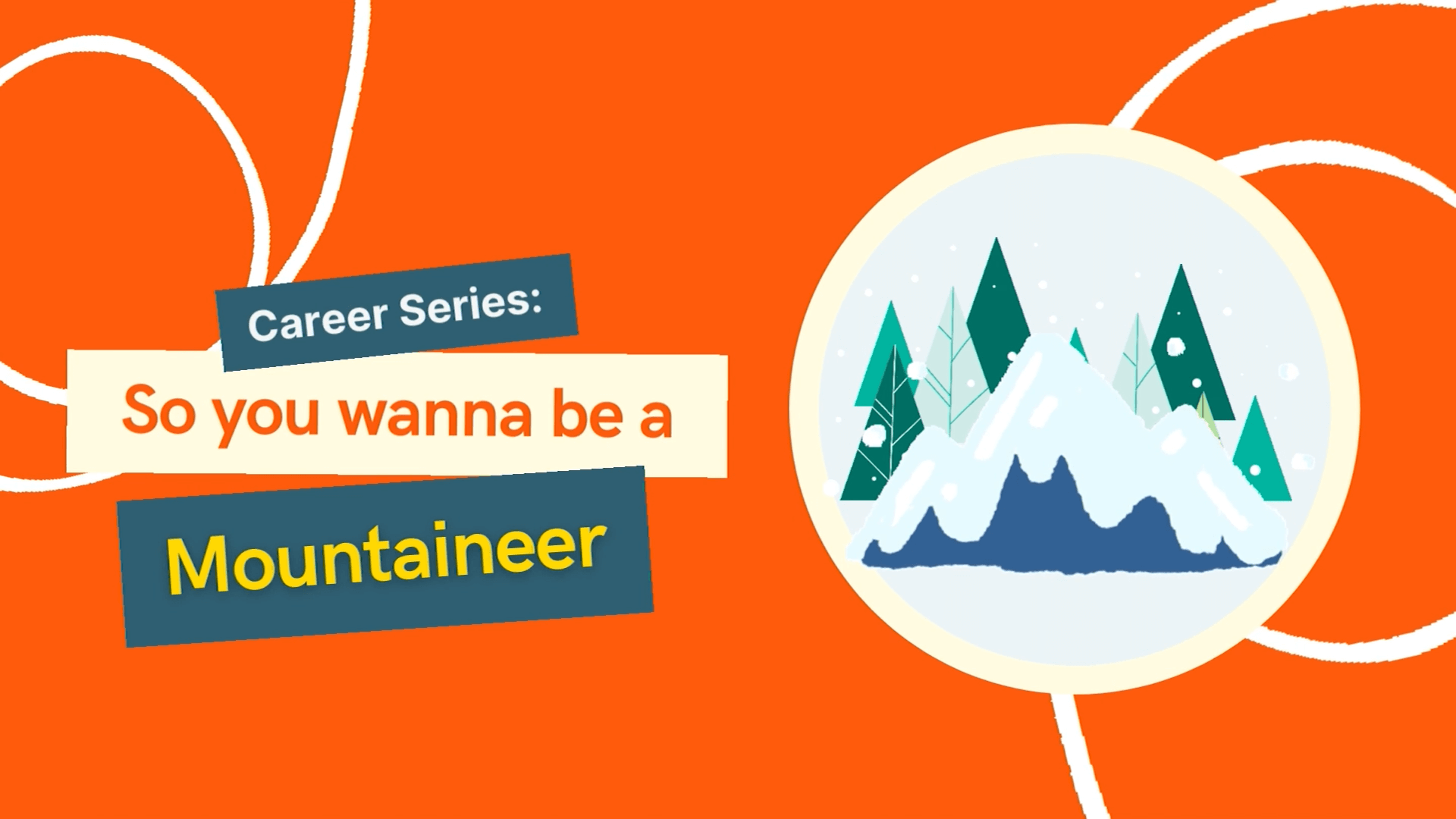


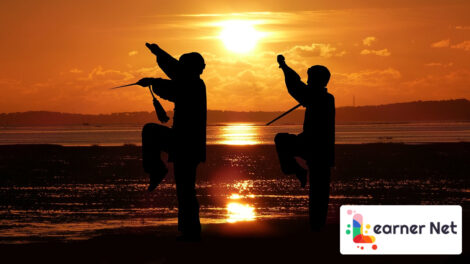


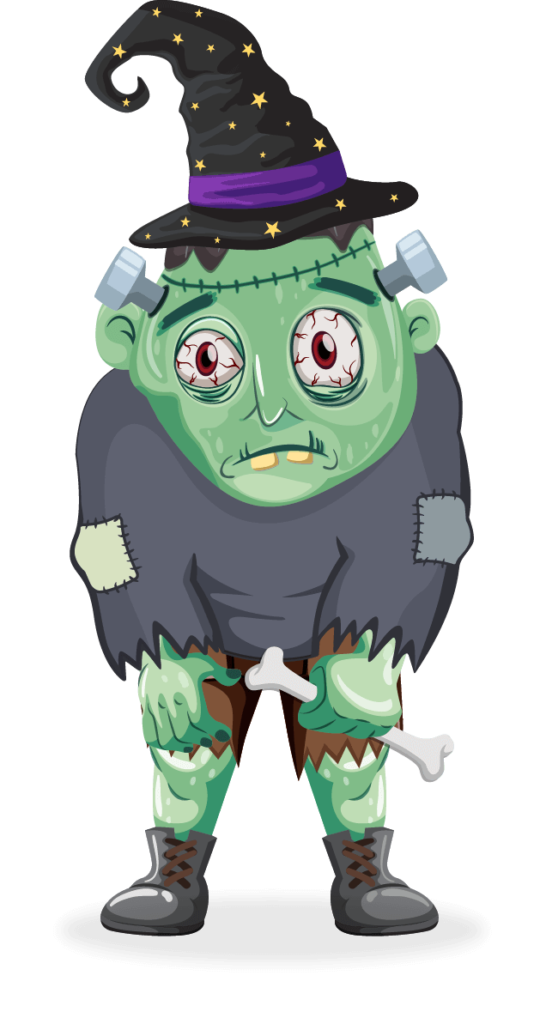
There are no reviews yet.